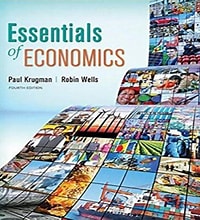
Essentials of Economics
Krugman, Paul; Wells, Robin
4th ed.
New York: Worth Publishers, Macmillan Learning, 2017
 |
Essentials of Economics Krugman, Paul; Wells, Robin 4th ed. New York: Worth Publishers, Macmillan Learning, 2017 |
13 termes
| panic buying n. |
|
| payoff matrix n. |
|
| pay-to-delay n. |
|
| perfect price discrimination n. |
|
| poverty program n. |
|
| poverty rate n. |
|
| poverty threshold n. |
|
| preserved farmland n. |
|
| price unresponsiveness n. |
|
| price-taking firmís optimal output rule n. |
|
| prisonersí dilemma n. |
|
| private health insurance n. |
|
| private spending n. |
|